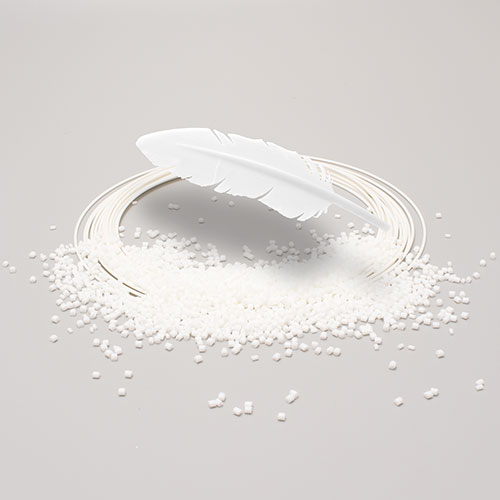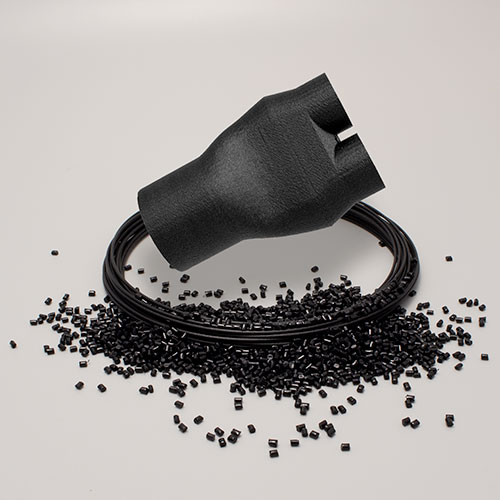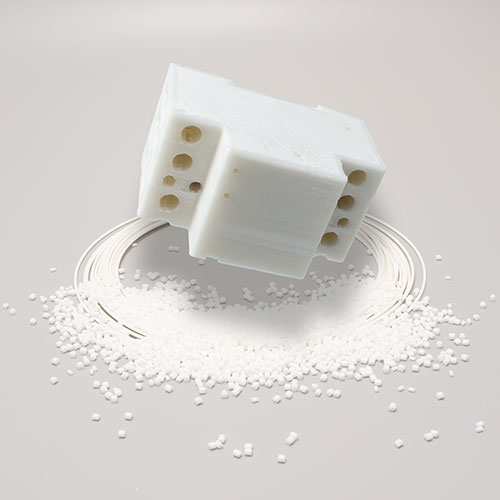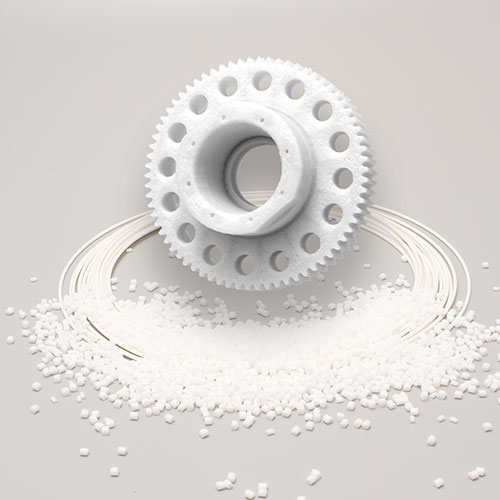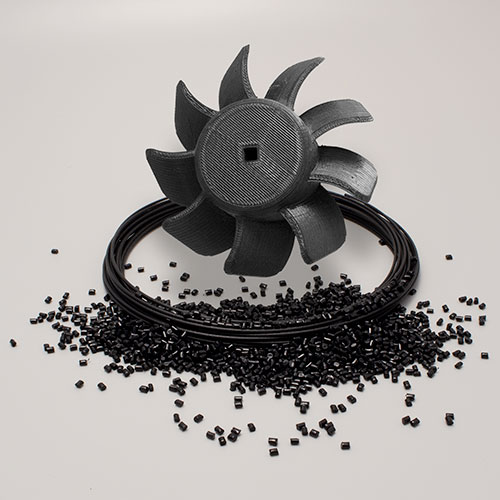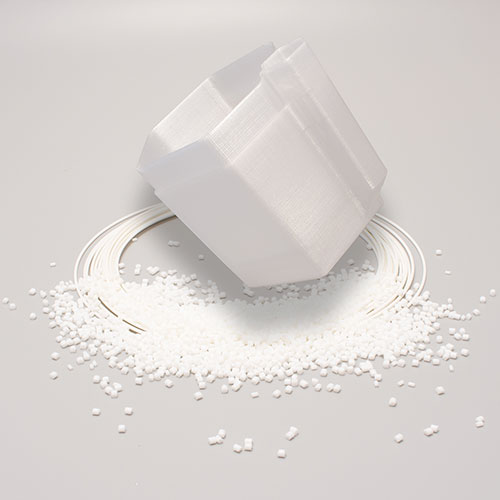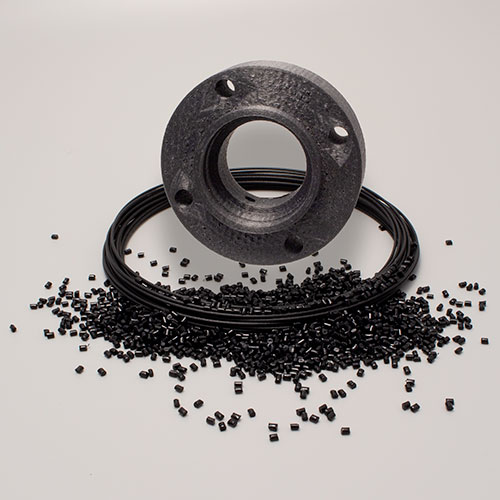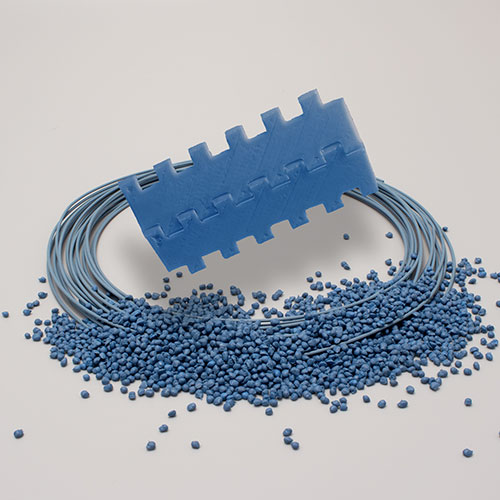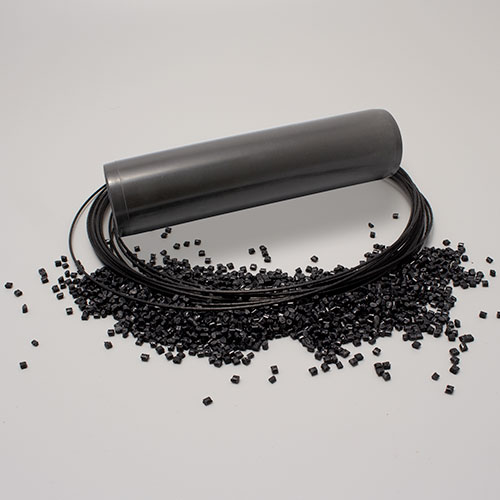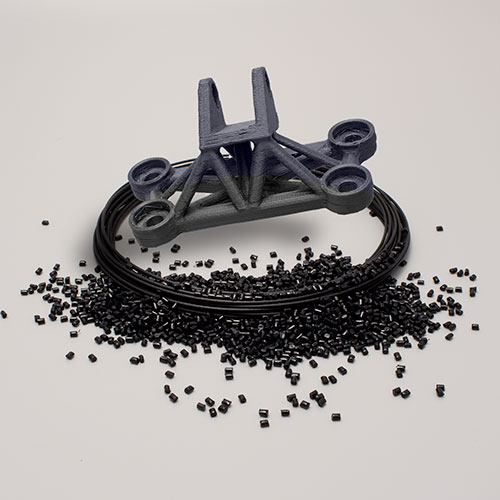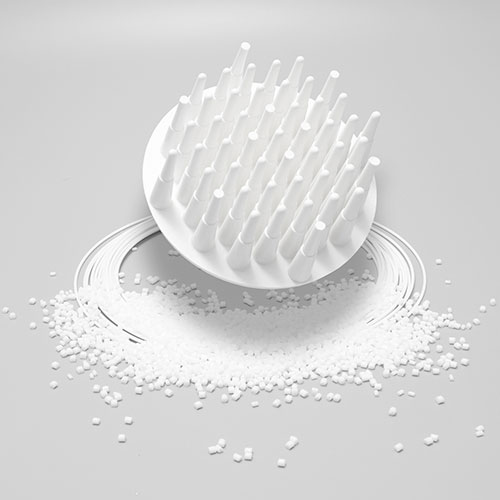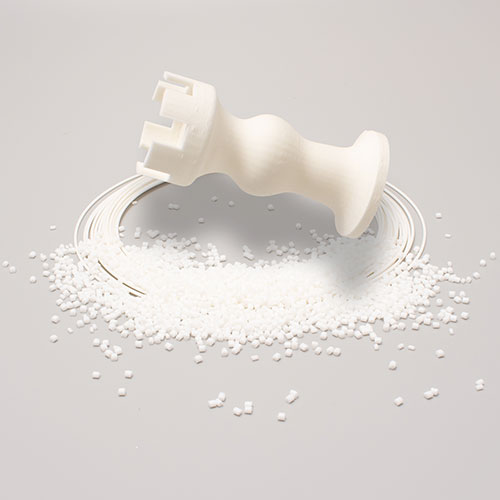3D Printing materials: discover LATI3Dlab’s super range!
The 3D printing materials developed by LATI3Dlab are able to satisfy any of your requirements, from aesthetic to functional applications.
LATI is a company that has been developing and producing technical thermoplastic compounds for almost eighty years. Today, thanks to its specialised laboratory, LATI3Dlab is able to offer a wide range of specific materials for 3D printing, both from filament and granule.
LATI3Dlab’s ‘AM’ technical materials are available for 3D printing using all major thermoplastic resins. These include PLA, ABS, ASA, PETG, TPU, PP, PA, PC, PBT, PPS, Polysulphones and PEEK.
Mineral or metallic fillers, fibre reinforcements, functional and process modifiers are added to the polymers, allowing them to be used in the most challenging applications:
- Self-lubricating materials suitable for applications where low wear and/or low friction is required;
- Self-extinguishing V0 for electrical and industrial parts;
- X-ray and/or metal detectable for food and medical applications;
- Electrically conductive/dissipative where compliance with ATEX regulations or signal or small power transmission is required;
- Thermally conductive for heat dissipation as a replacement for aluminium, e.g. in the lighting industry;
- Structural, where carbon or glass fibre enables the achievement of mechanical properties similar to those of injection moulding;
- Controlled density, where there is a need for materials with reduced or higher density than standard polymer
- Sustainable’ versions, made from 100% recycled or renewable non-petrochemical polymers and fillers/reinforcements.
Curious to know more?
Read on and discover the full range!
3D Printing materials
Density-controlled 3D printing materials
High-temperature resistant 3D printing materials
High-temperature resistant AM materials are made from 'super' polymers such as PPS, Polysulphones or PEEK. They enable uses where medium to high temperature resistance is required, together with excellent chemical and hydrolysis resistance and, often, self-extinguishing properties. Available in both virgin and filled or reinforced versions.
Self-extinguishing 3D printing materials
The family of self-extinguishing AM materials includes both intrinsically self-extinguishing polymers, such as PPS or PEEK, and more standard polymers, such as PETg or PC. The basic polymers are additivated in order to achieve the highest level of self-extinguishability, i.e. V0, which is required for numerous applications in the electrical/electronics field and beyond.
Self-lubricating 3D printing materials
Self-lubricating materials are ideal for applications involving rubbing or sliding. In these cases, it is important to ensure a low coefficient of friction and increased wear resistance. LATILUB AM self-lubricating materials offer optimised tribological performance through the use of fillers such as PTFE, silicones or Kevlar.
Electrically conductive/antistatic 3D printing materials
For applications requiring antistaticity or compliance with ATEX (explosive atmosphere) regulations, LATISTAT AM and LATIOHM AM materials are the ideal answer. These materials are made electrically conductive/ESD thanks to specific additives, carbon fillers and carbon nanotubes. Electrically conductive versions are also available for the transmission of signals or low currents.
Green / sustainable 3D printing materials
The AM family of sustainable materials includes two types of products:
LATIGEA AM, made from polymers from renewable non-petrochemical sources;
LATIECO AM, made from recycled polymers and/or fillers and reinforcements.
These materials offer a reduced environmental impact without compromising the good processability and unique properties of LATI's AM engineering materials.
Engineering 3D printing materials
AM engineering materials are suitable for situations where standard polymers do not meet the design requirements for processability, mechanical or thermal resistance. They are designed to offer superior performance compared to common 3D printing materials, either in virgin versions or through appropriate additives, fillers and reinforcements.
Magnetically detectable 3D printing materials
In the pharmaceutical and food industries, it is important that fragments of plastic parts are detectable by metal detectors to prevent contamination. For this purpose, MDT AM materials were developed, which are not only magnetically detectable, but also have a blue colour for optical detection. In addition, they comply with EU 10/2011 and FDA regulations for use in contact with food.
Radiopaque 3D printing materials
Plastics are usually transparent to X-rays; the LATIGRAY AM family was developed to make them visible and detectable. replacing lead. These materials are suitable for food and medical applications and often meet the specifications required for use in these sectors. Some formulations also include radio shielding properties, replacing lead.
Structural 3D printing materials
To close the gap in mechanical performance compared to injection-moulded parts, reinforcements such as glass or carbon fibres are required. Thus AM structural materials are born, reinforced with up to 20% fibre (for filament) and up to 50% fibre (for direct printing from granule). Endowed with exceptional dimensional stability, they are available on any base resin, from PLA and PA to PPS or PEEK.
Thermally conductive 3D printing materials
Wherever heat has to be dissipated, such as in electronics or lighting technology, thermally conductive materials developed by LATI3Dlab under the name LATICONTHER AM are used. Additivated with high percentages of graphites and special ceramics, they allow heat dissipation without sacrificing good processability and printability with FFF technology.
Standard 3D printing materials
LATI3Dlab's AM family of materials also includes versions of basic polymers suitable for any application where no particular functional, thermal or mechanical properties are required. These are polymers, such as PLA or PETg, designed and tested with the aim of offering optimal processability and aesthetic performance of the final part.
